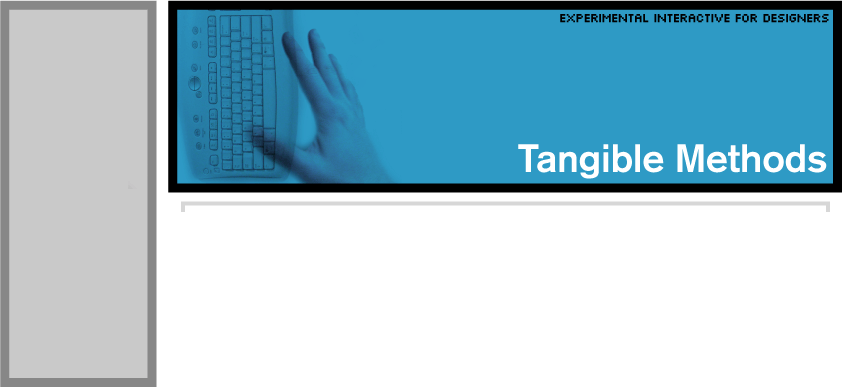| CONCEIVING TANGIBLE COMPUTING PROJECTS can be daunting. In this section we will take a look at two projects where tangible methods were employed to enhance the user-experience of a design. |
| Project3Media Installation Case Study |
 |
| For this project, art collective Project3Media wanted an installation that users could interact with to view various group members' work. Using the method described in the Hardware Hack Lab, Project3Media was able to produce a device to interact with a showcase gallery developed in Macromedia Flash without any special software. Several visitors to the installation were dumbfounded at how the installation worked since the computer powering the gallery was hidden with only the button device visible to users. |
| Navigable Information Environment Case Study |

|
| above: NIE Wearable Technology Design below: NIE installation setup with communication paths |
 |
The Navigable Information Environment (NIE) system was developed originally as a visualization system for large web sites. Files were read into Processing and two-dimensional graphics were rendered based on the tree structures found on a given server. The addition of a tangible interface allowed more degrees-of-freedom when viewing the information, leading to the expansion of the system into a 3D-browsing system detecting hand-gestures and manipulating the 3D-environment accordingly. The same method described in the Hardware Hack Lab was used, but employing a wireless-RF keyboard as a base for development. The keys were mapped to buttons placed under the fingers of the user. The green fabric is detected with the Myron Processing Library and mapped to an on-screen widget which appears when a gesture is detected by a keypress. This is an example of an interface utilizing two methods of hardware hacking and repurposing to acheive a desired set of input data. This is okay. Obtaining digital (keypresses) and analog (position-sensing) data is often seperated because of the technical hurdles in obtaining analog data from the real-world. |
